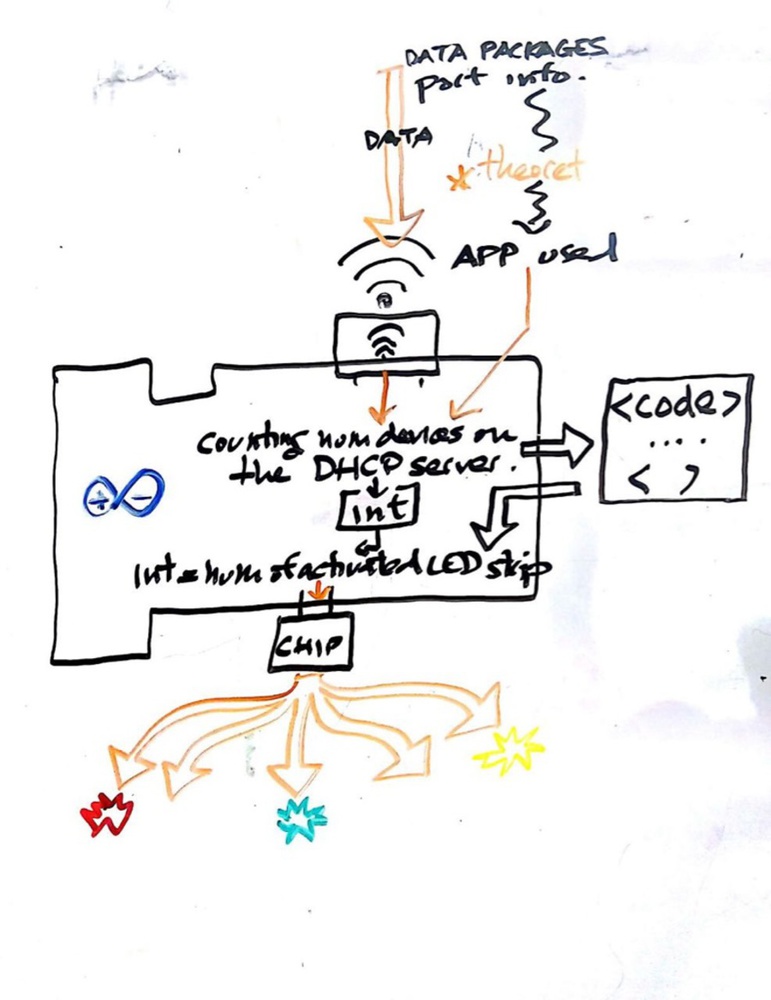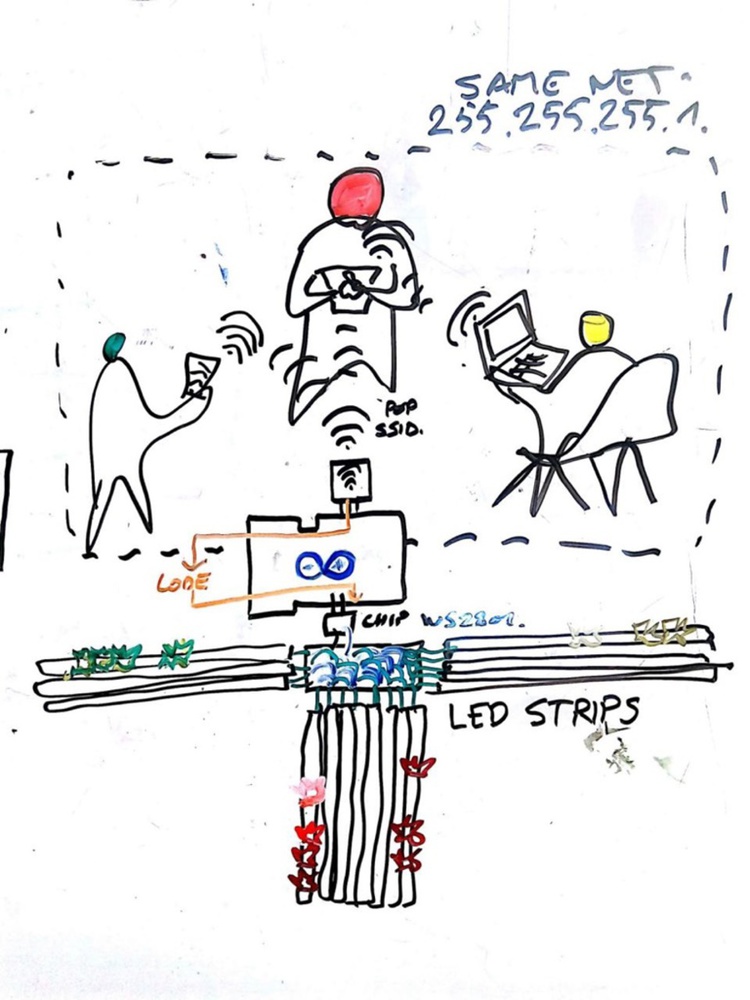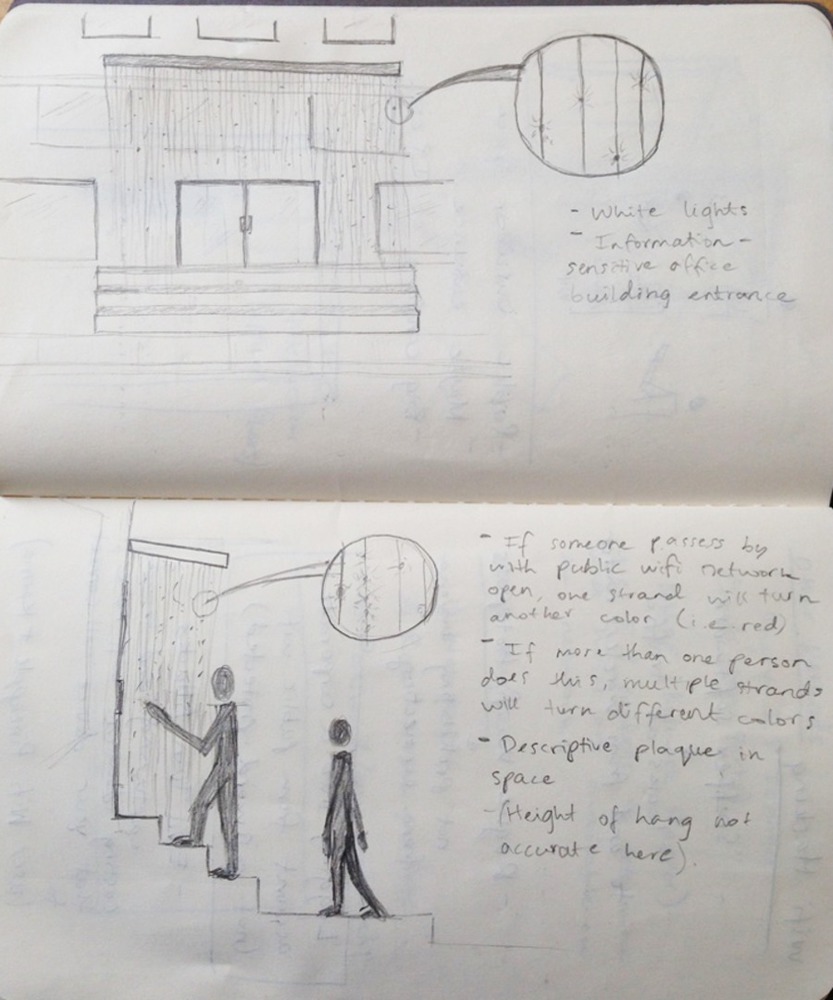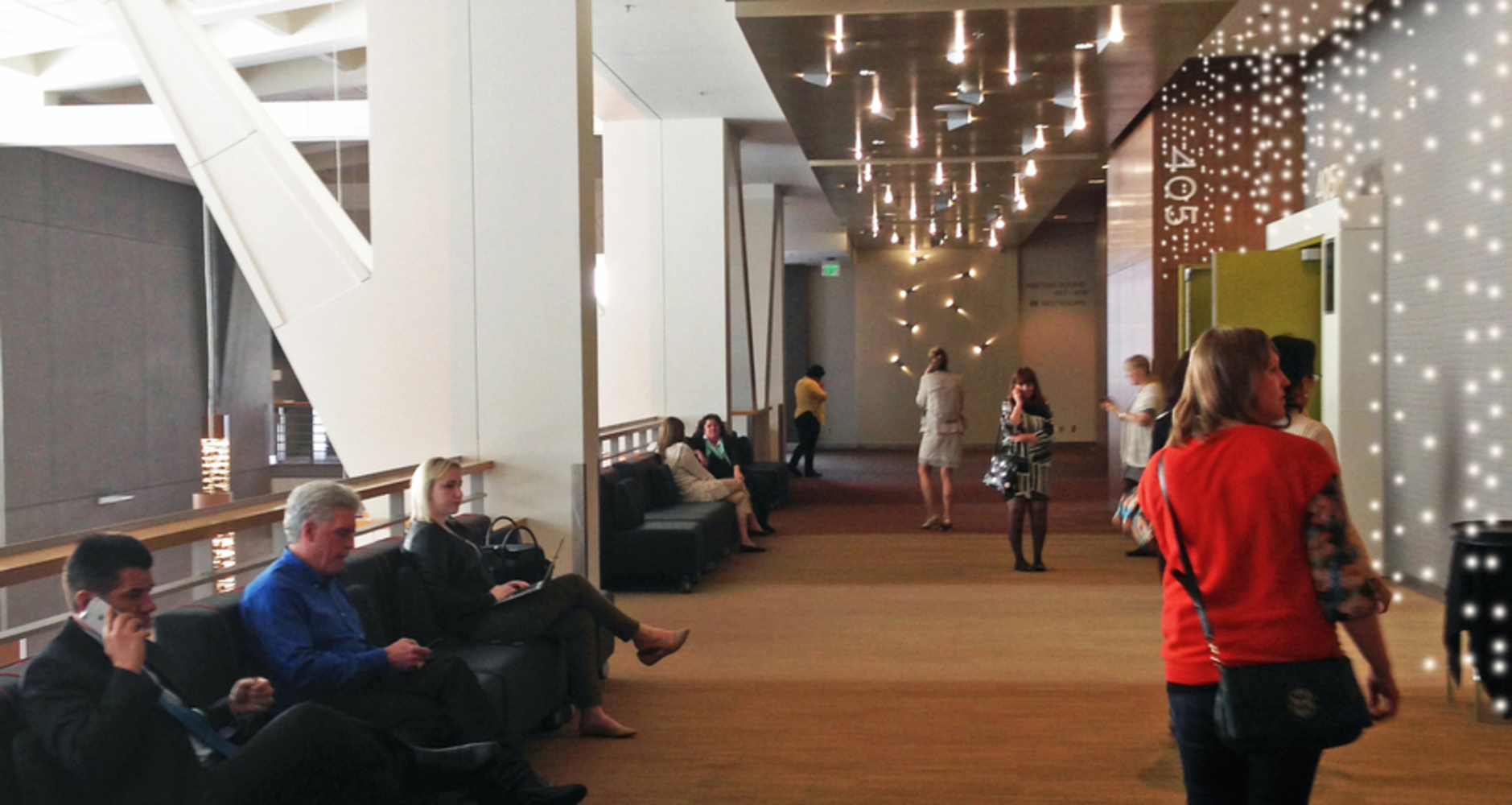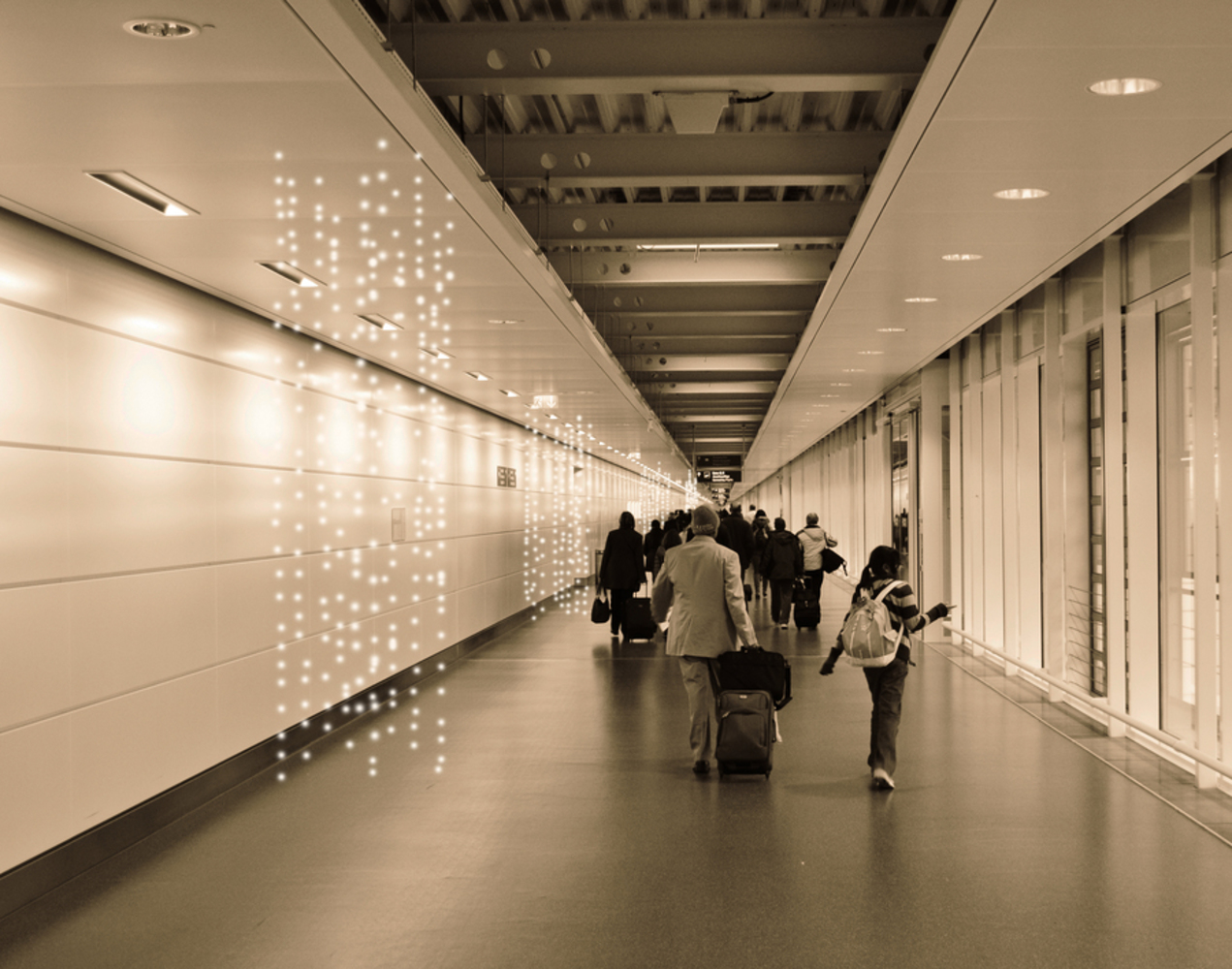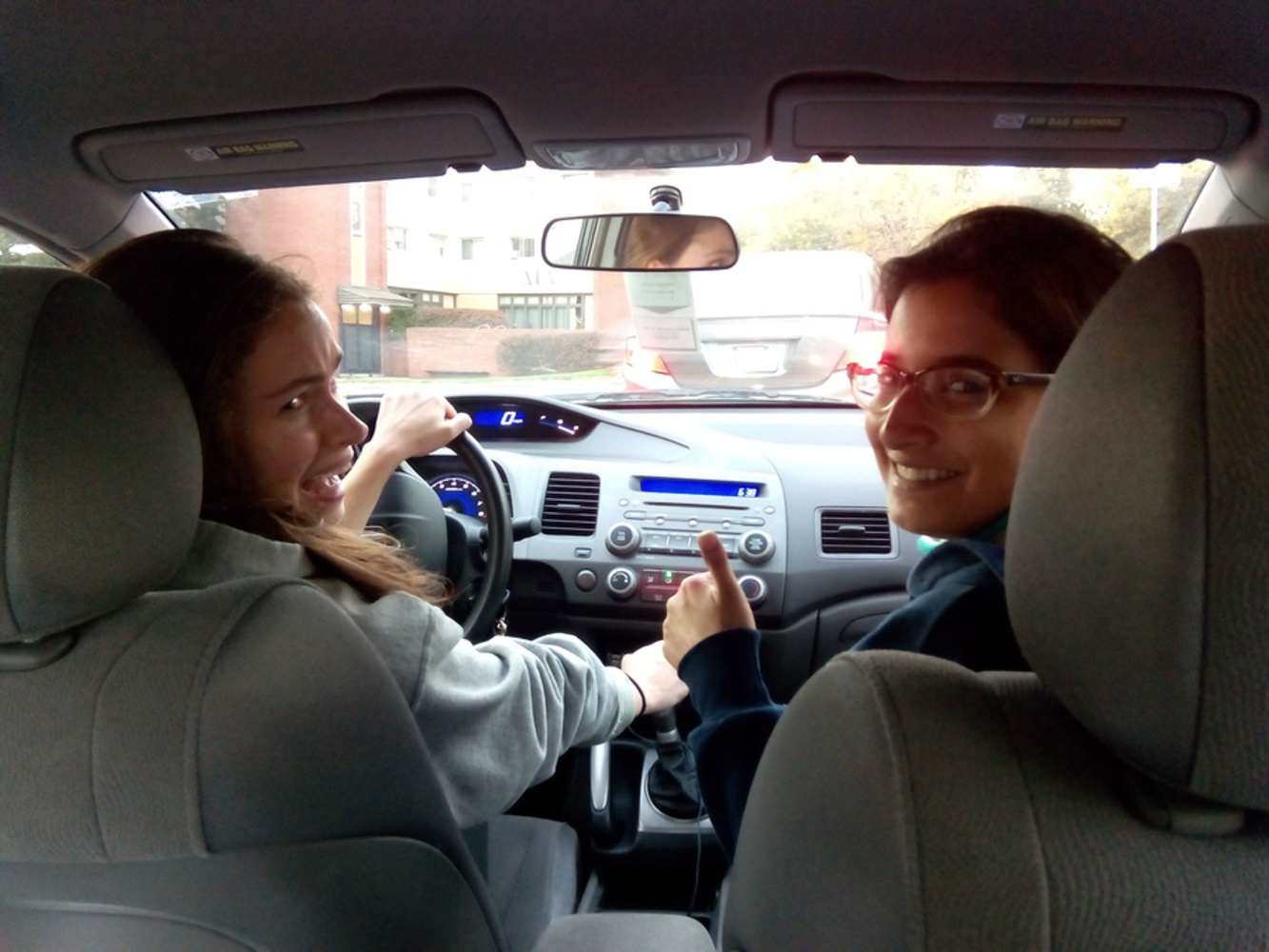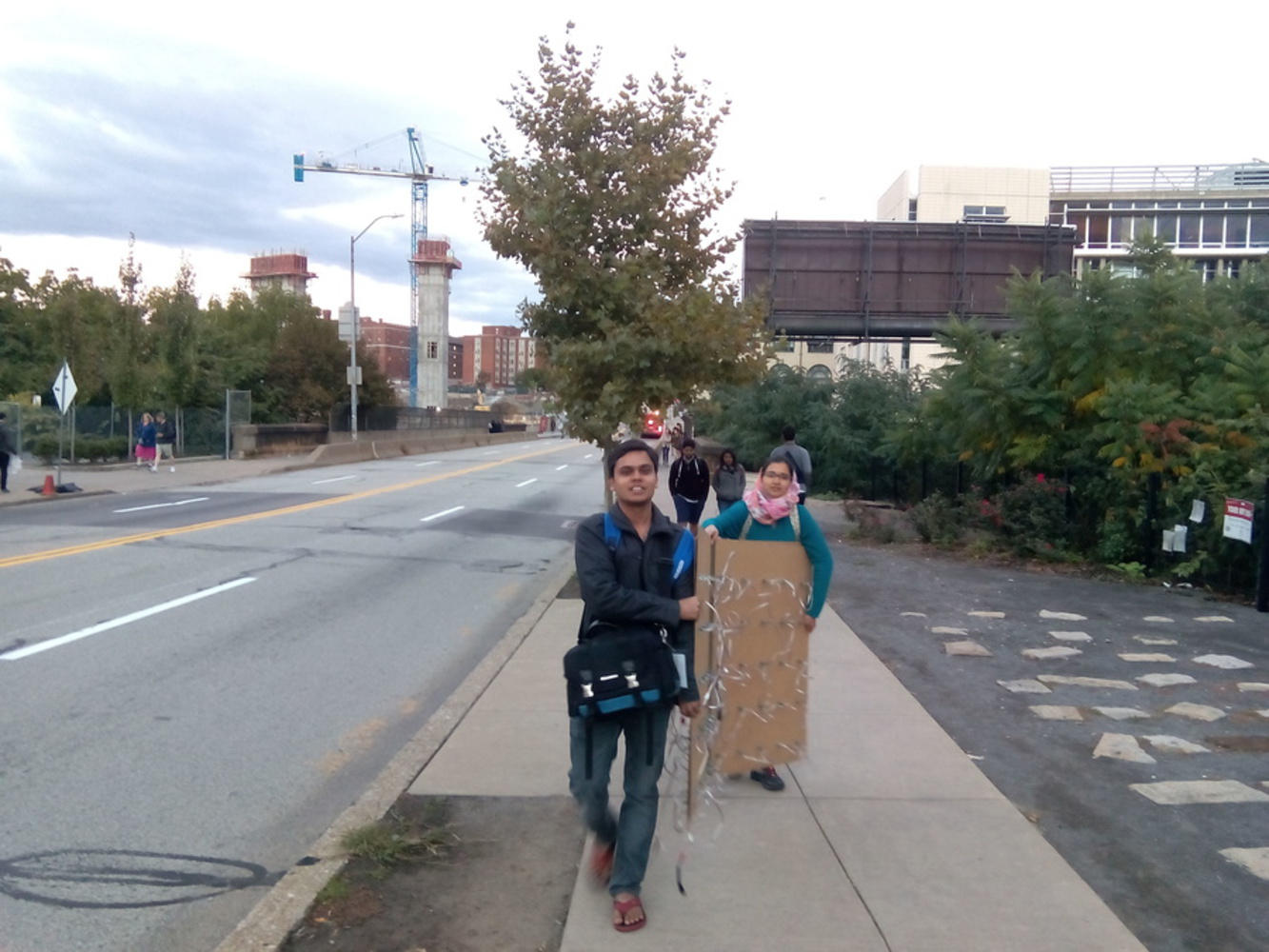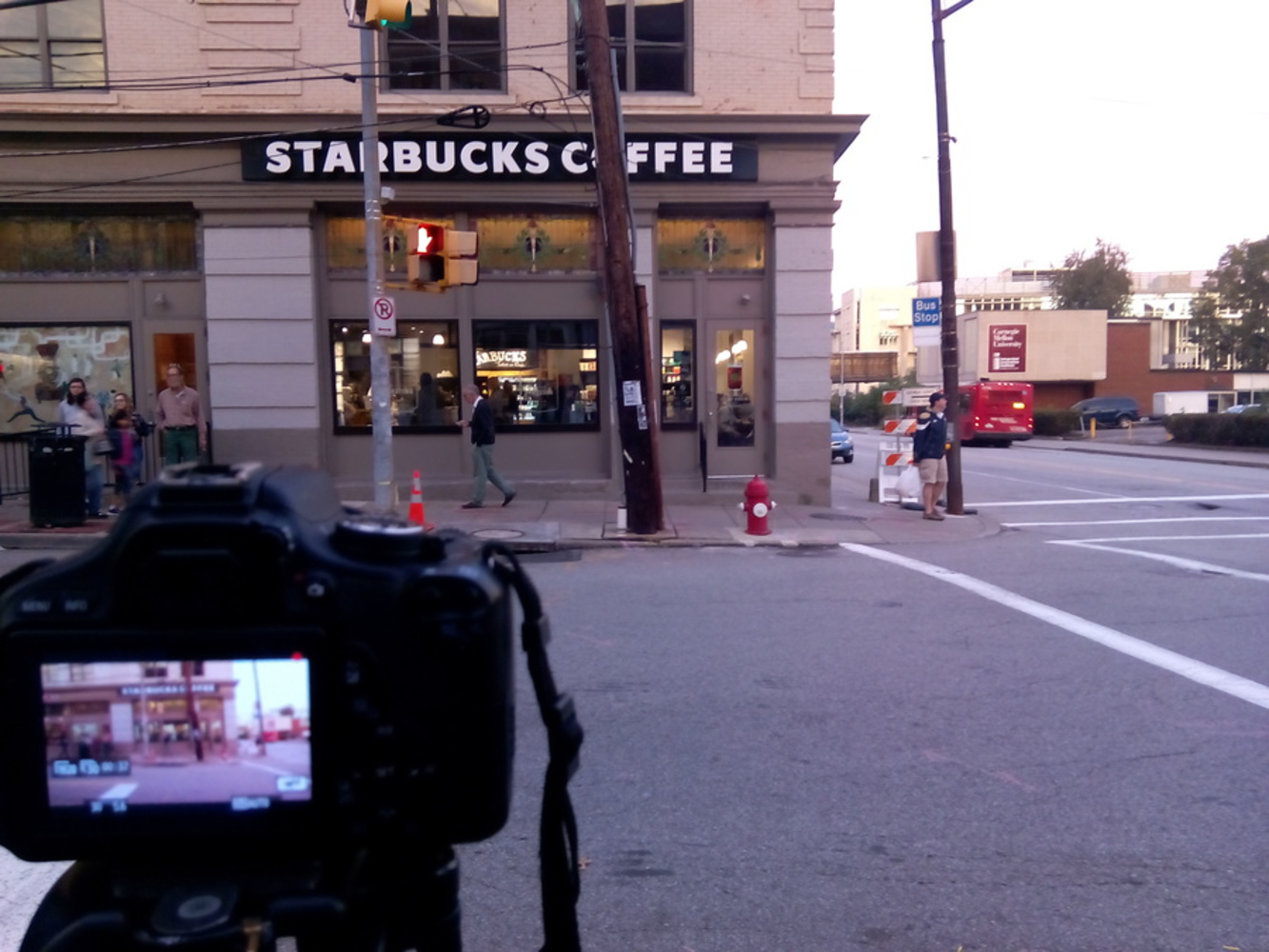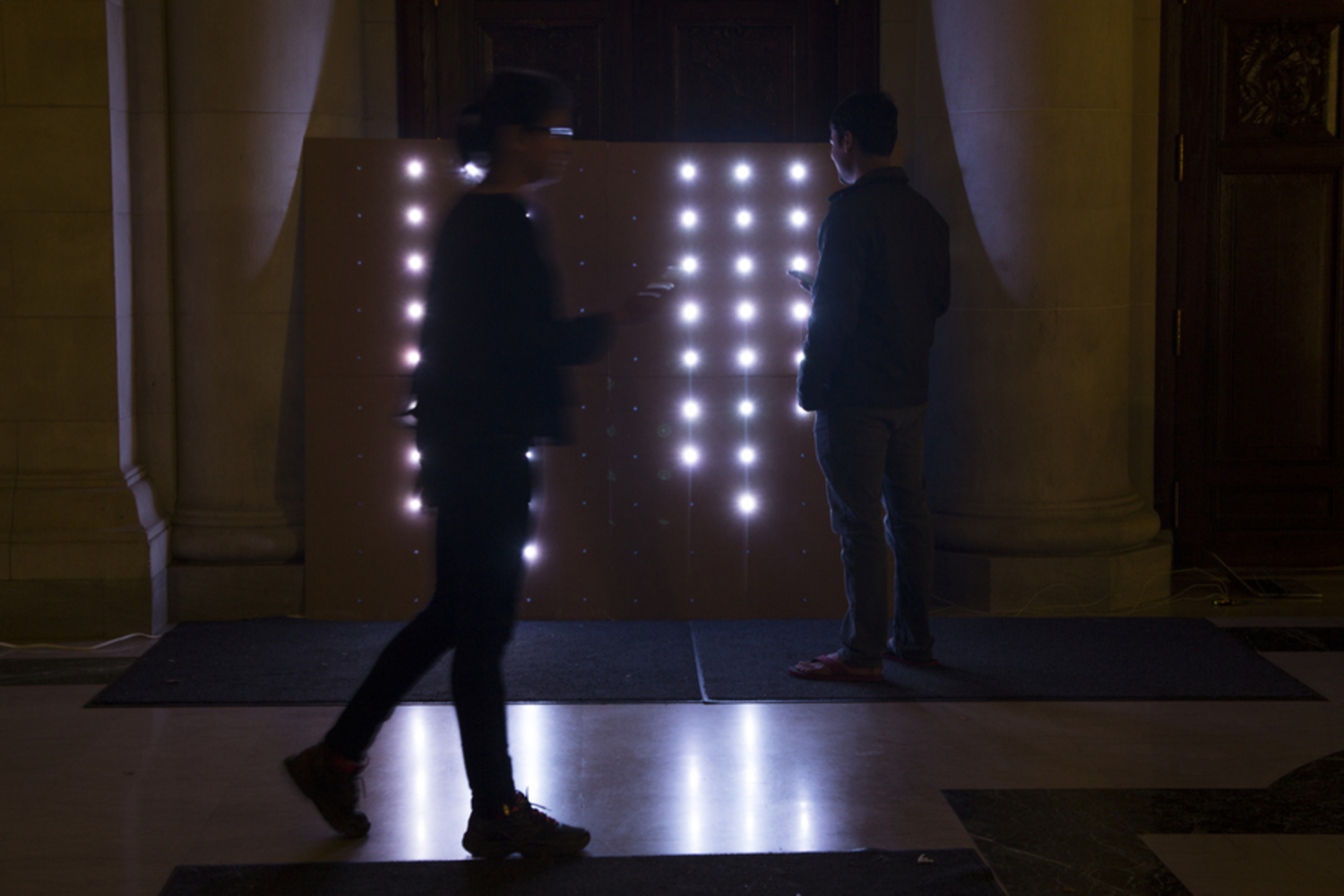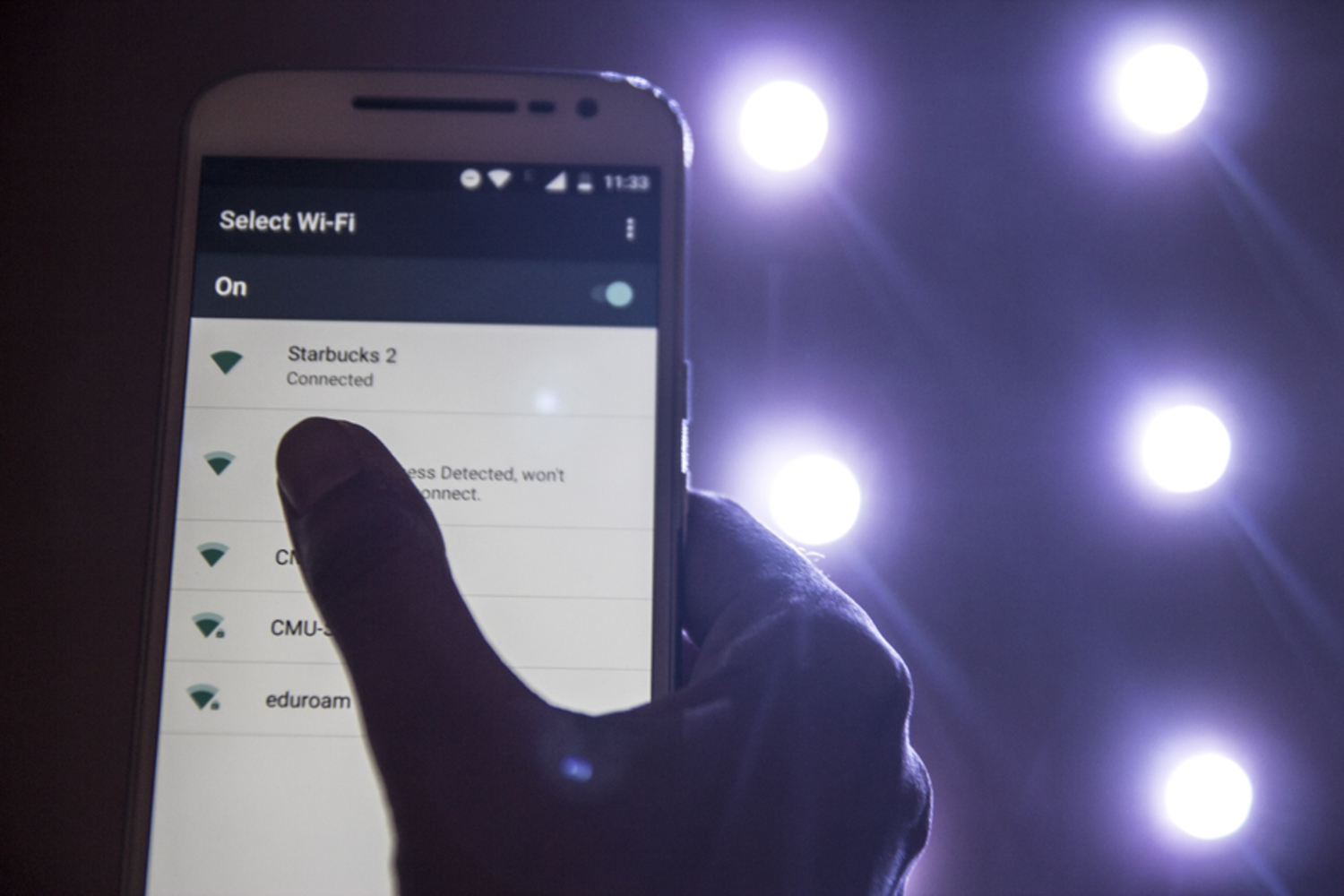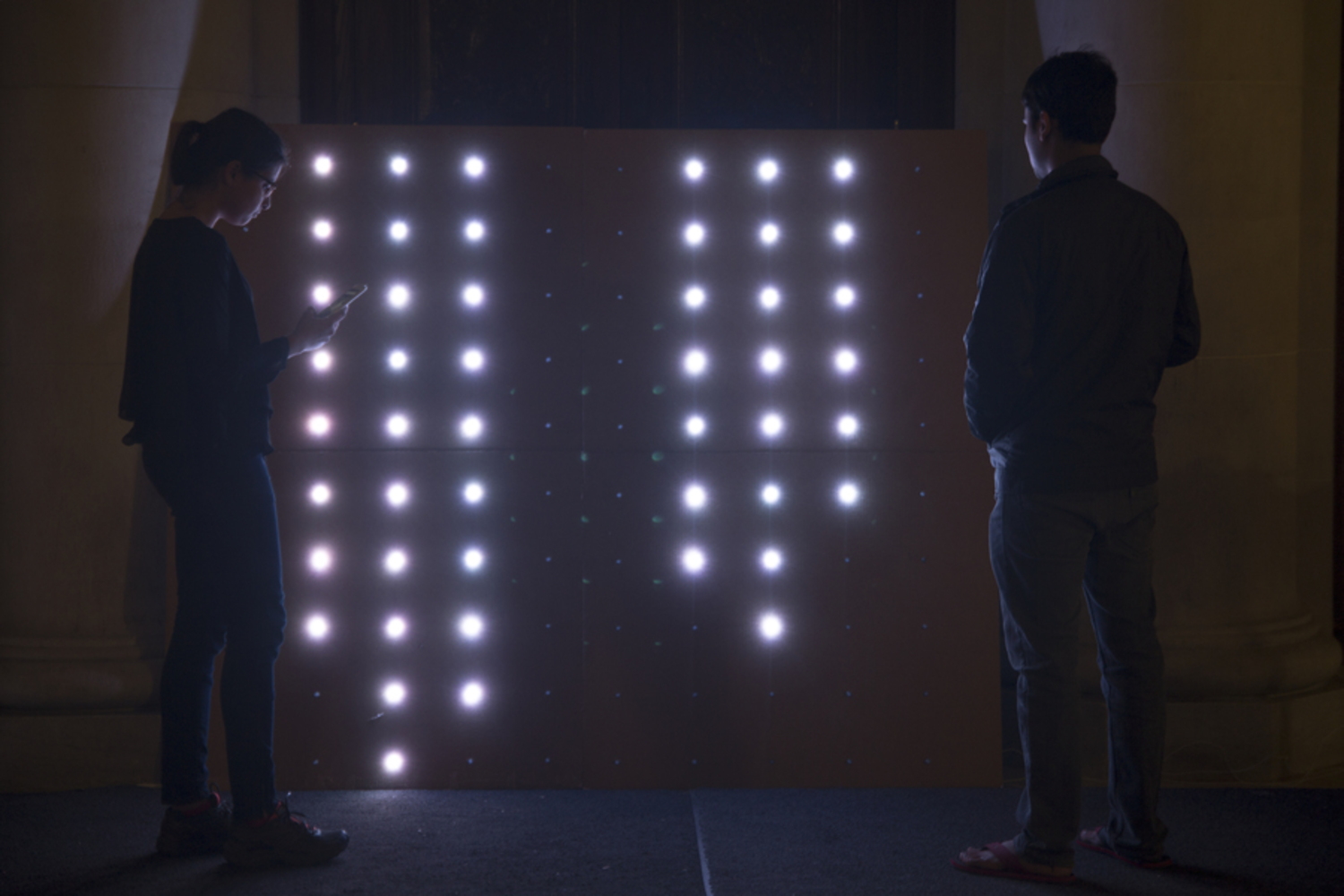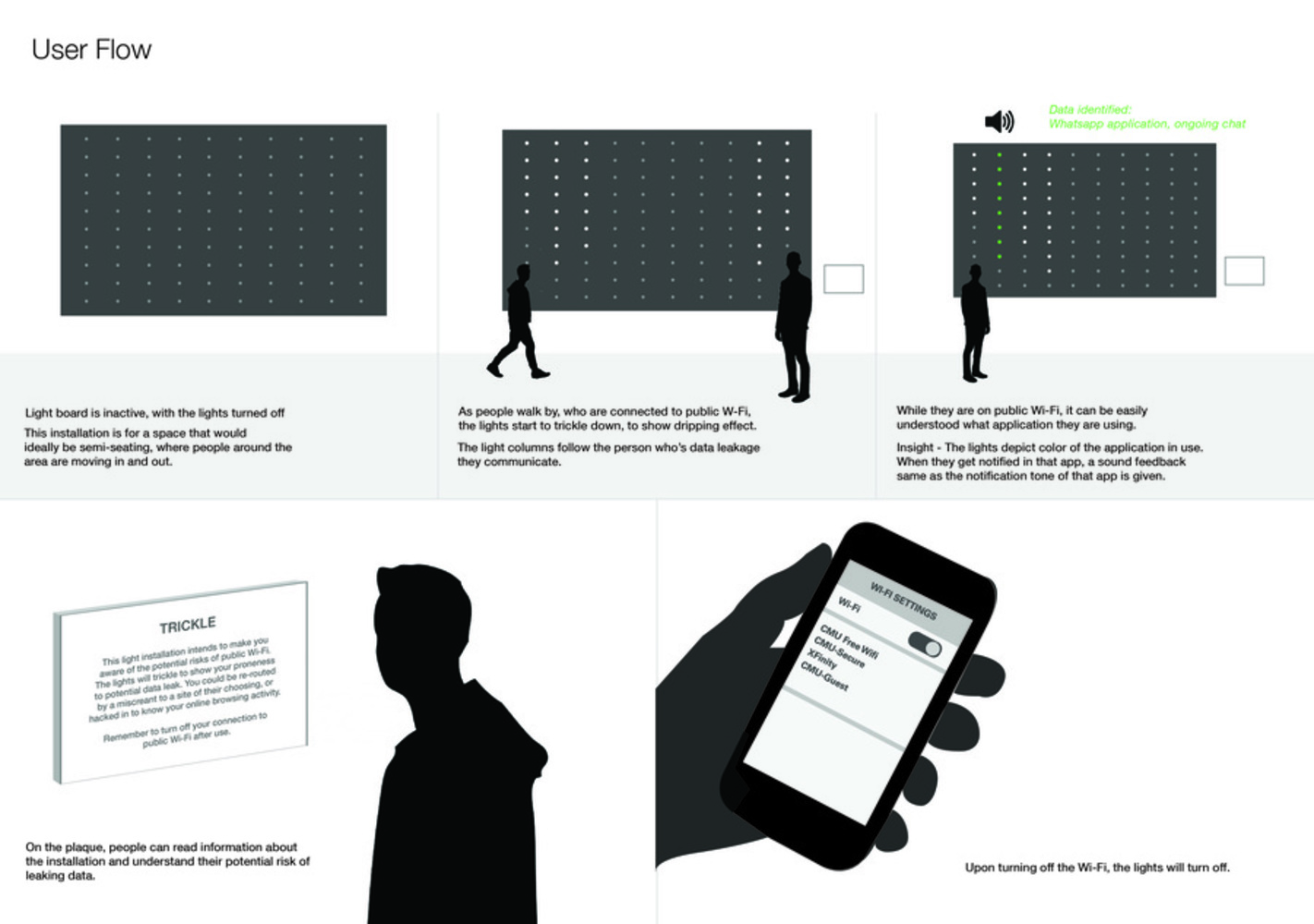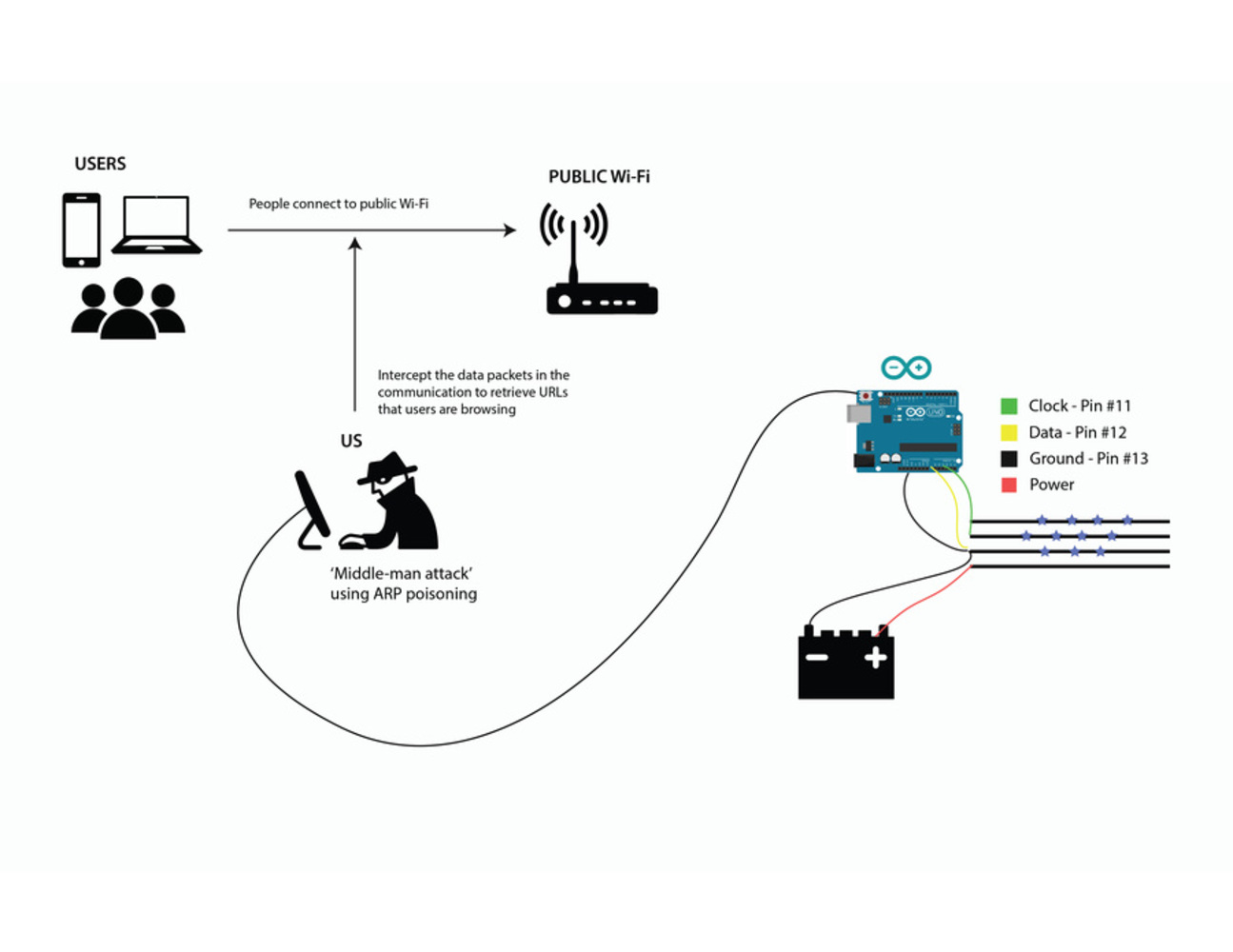OUR WRITTEN RESPONSES
What is it?
For our project, we completed two different processes. One was the setup of the evil twin wi-fi network. Through this network we were able to access people’s web and browsing activity while they are connected to the wi-fi network we set up. The second part of our project was to create a light installation that reacts to nearby devices that are on public wi-fi networks. When someone passing by the installation is connected to a public wi-fi network, the lights will trickle down at a rapid pace, reminiscent of data leakage. As the person continues to walk the lights will follow the user. Once the user recognizes their impact on the activity of the board, they will notice a color change in the lights, symbolizing the color scheme of the app they are currently on or using. Immediately following, an audio indicator in the space will play the notification sound of this specific application. We hope that the actions of our installation will intrigue people enough to read our placard on the wall and inform themselves about how easy it is to have data from their phones leaked. Furthermore, we hope that they will remind themselves in the future to turn off their wi-fi.
Why is it worthwhile?
Data leakage is a huge problem plaguing the technology world today. It is incredibly easy for virtually anyone to access someone’s private data, and even easier if the user is connected to a public Wi-fi network. Placing our light installation in a location where people frequently connect to public Wi-fi will reinforces how easy it is to have data leakage occur on your device. Our installation is non-invasive and relatively unobtrusive, however we have implemented visual and auditory indicators that clearly inform the people passing by of their open public wi-fi networks. After hearing critique from the visitors during our presentation, we now realize that the project may have been more impactful if we had staged it in a location with more sensitive information sources. People who care about data leakage are aware of the risks of being on public wi-fi, especially in places like Starbucks.
What insights brought you to this project?
We were inspired by an experiment that was conducted by Avast mobile security and presented at the Mobile World Congress last year in Barcelona. Avast’s team set up several wi-fi hotspot networks in the Barcelona national airport and, within a matter of only four hours, was able to capture more than 8 million data packets and gather personal information from thousands of users including which websites they visited, what kinds of phones they had, and much more. As it is relatively easy to setup a hotspot network or, in our case for this project, an evil twin network, and gather information about online activity of people using it, we felt that it was important for the public to be informed about this. We chose to tell this story through a light and sound installation. In terms of the design of the installation, we drew from Julian Oliver’s work with data leakage, however we chose use lights in a very different way than Oliver does.
What insights brought you to this project?
We were inspired by an experiment that was conducted by Avast mobile security and presented at the Mobile World Congress last year in Barcelona. Avast’s team set up several wi-fi hotspot networks in the Barcelona national airport and, within a matter of only four hours, was able to capture more than 8 million data packets and gather personal information from thousands of users including which websites they visited, what kinds of phones they had, and much more. As it is relatively easy to setup a hotspot network or, in our case for this project, an evil twin network, and gather information about online activity of people using it, we felt that it was important for the public to be informed about this. We chose to tell this story through a light and sound installation. In terms of the design of the installation, we drew from Julian Oliver’s work with data leakage, however we chose use lights in a very different way than Oliver does.
